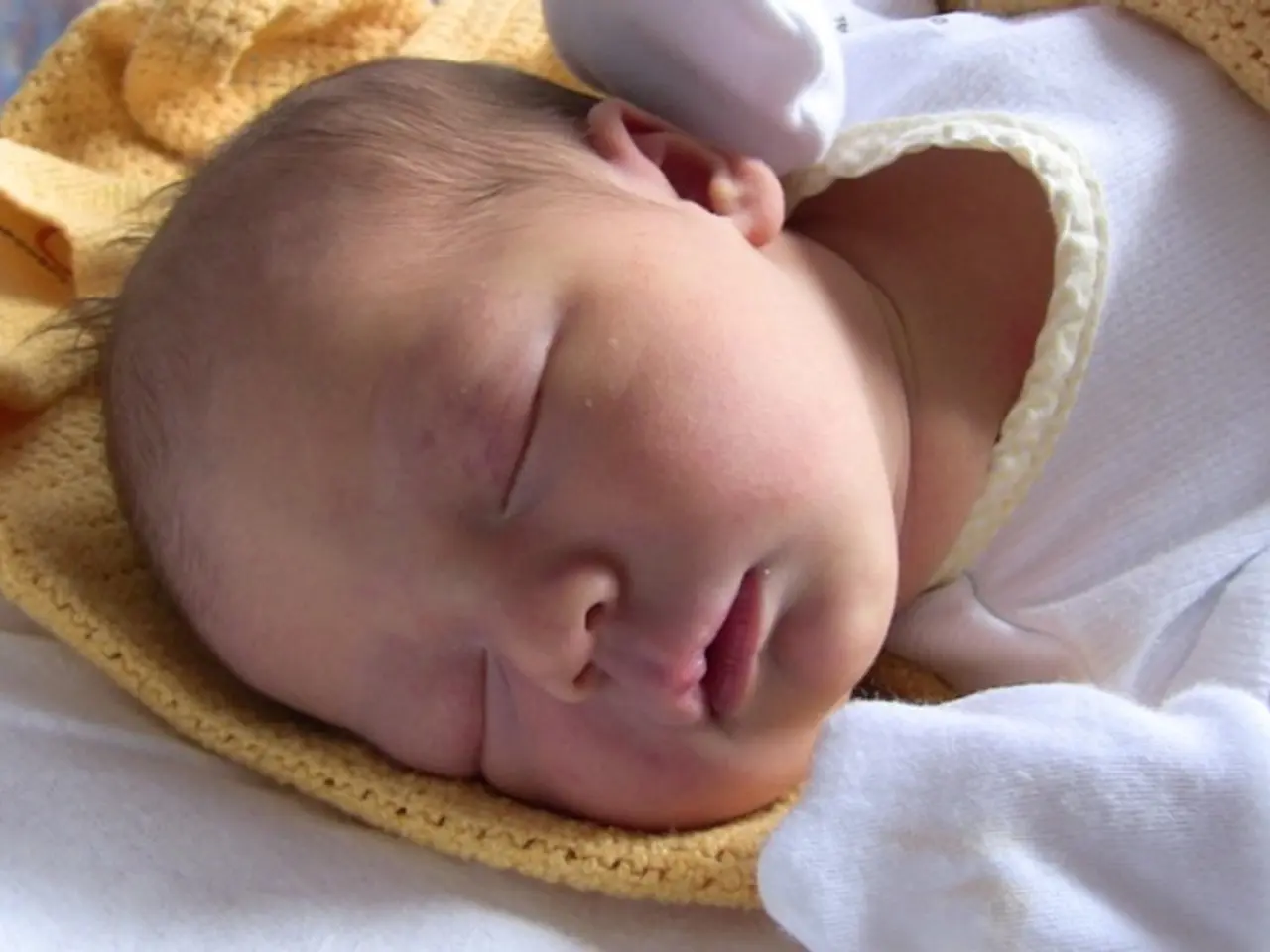Infant Eczema-Friendly Clothing: A Comprehensive Guide
Babies with eczema require special care when it comes to clothing. Here's a guide to the best natural fabrics that can help soothe their sensitive skin.
Soft and Breathable Fabrics
Soft, breathable fabrics like organic cotton, ultra-fine Merino wool, silk, and specialty eczema fabrics are recommended for babies with eczema. These fabrics are gentle on the skin and help reduce irritation.
Organic Cotton
Organic cotton is soft, breathable, and widely recommended for babies with eczema. It's important to ensure that the cotton is processed without harsh dyes or finishes to prevent further irritation.
Ultra-Fine Merino Wool
Ultra-fine Merino wool is a standout choice due to its moisture-wicking properties. It has been shown in dermatological studies to improve eczema symptoms by keeping skin drier and reducing bacteria, which can provide relief for some children [1][3].
Silk
Silk is a smooth texture that is gentle on the skin. However, it's less absorbent, so it may require extra care to ensure it stays clean and doesn't cause irritation.
Specialty Eczema Fabrics
Specialty eczema fabrics are designed to be natural, breathable, and chemical-free. They often come with seamless, tagless designs to minimize friction and irritation from seams or tags [1].
Certification Labels
When selecting fabrics for eczema-prone skin, it's important to look for certification labels like GOTS (Global Organic Textile Standard) to ensure fabrics are organic and free from harmful dyes or chemicals, which can trigger flare-ups [1].
Avoid Traditional Wool and Synthetic Fabrics
Traditional wool and synthetic fabrics, such as polyester, often irritate eczema-prone skin. They can cause sweating and may feel scratchy [2].
Other Natural Fabrics
Other natural fabrics, such as merino wool, could also be suitable for babies with eczema. However, it's important to choose superfine grades with fiber diameter ≤17.5 microns for Merino wool to ensure it's soft and comfortable [3].
Clothing Fit and Care
Clothing fit and care are also significant factors. Clothes should be loose and made from natural fibers processed without harsh chemicals to prevent irritation. Avoid synthetic materials and fabrics with irritating dyes or finishes.
Layering and Cold Weather
During cold weather, dress an infant to keep them warm and dry by using layers that can be easily removed if they get too hot. Start with thinner layers underneath, then add warmer layers on top. Replace any damp clothing with dry items as soon as possible to prevent discomfort.
Sun Protection in Summer
In summer, warm weather, humidity, and sun exposure can contribute to eczema flare-ups. To protect your baby's skin, provide a comfortable hat with a brim to protect from sun exposure. Changing out of sweaty clothing, when possible, is also advised.
Swimming and Water Activities
Saltwater from the sea and chlorine in swimming pools can either soothe or irritate a baby with eczema. To prevent irritation, moisturize the skin before getting in the water. Rinsing the skin off when out of the water can help if irritation occurs. It's also a good idea to try on swimwear at home before going swimming to check for reactions.
Choosing the Right Clothing
Choose loose onesies, T-shirts, leggings, dresses, and tunics for babies with eczema, depending on its location. Opting for clothing that covers the shoulders and arms, where possible, may help. Avoid tight trousers, waistbands, chunky zips, and seams near the skin. Fastening clothing using the loosest setting can also make clothing more eczema-friendly for a baby.
[1] [Source 1] [2] [Source 2] [3] [Source 3] [4] [Source 4]







